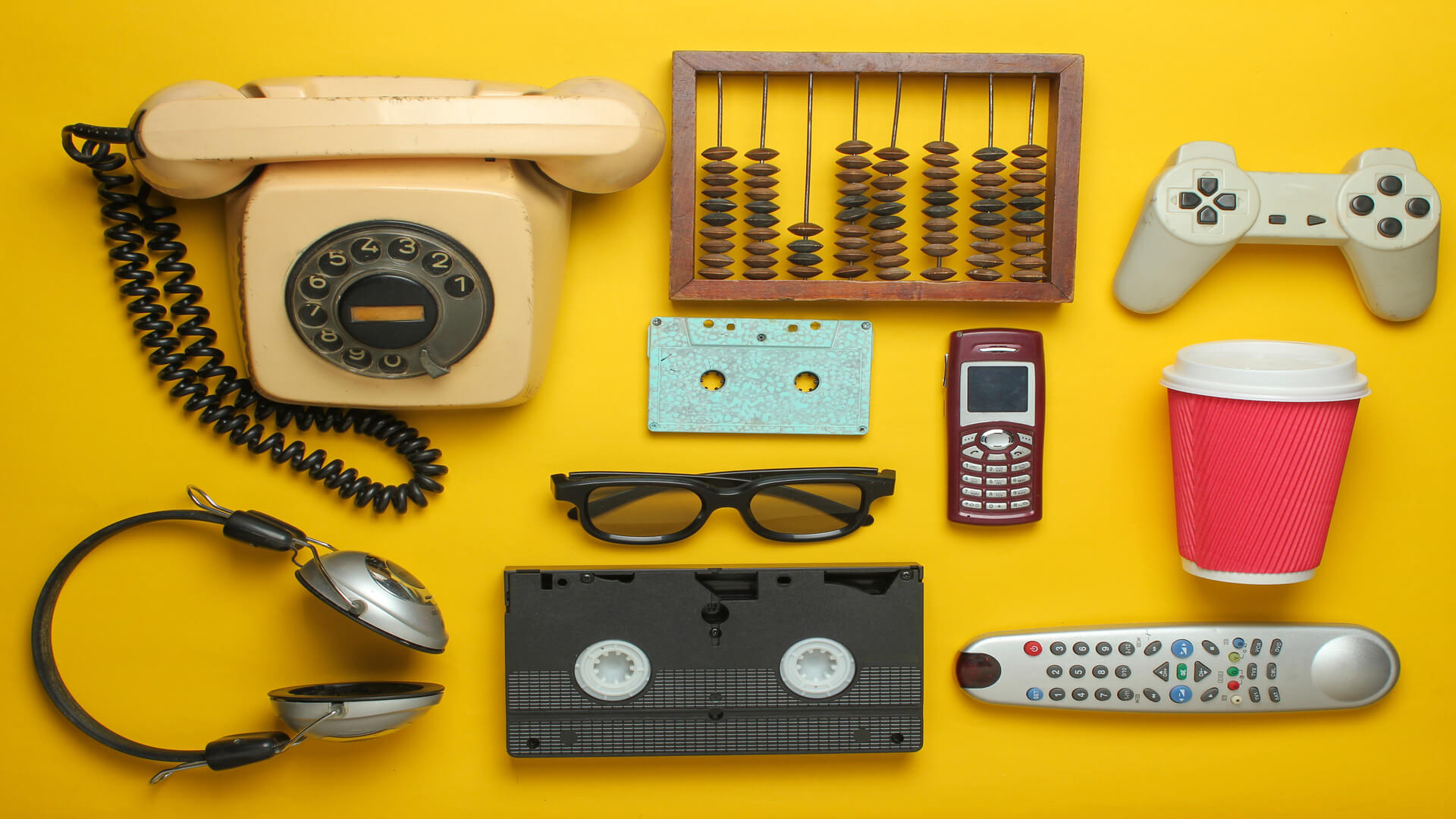Nostalgia is a sentiment most of us are familiar with. It’s that warm, fuzzy feeling associated with reminiscing about the past. However, nostalgia can often be tinged with sadness as people miss those days gone by.
Research has proven that nostalgia can be positive for mental health and can even reduce symptoms of anxiety, stress and depression. What’s more, people actively engage in nostalgia. It can be willful, like choosing to think of happy memories. But sensory triggers like a photo, smell or sound also allow us to indulge in nostalgia.
Nostalgia has a big influence on the things we consume. Brands and media producers understand the psychology behind nostalgia and use it to their advantage. That’s not necessarily a bad thing if purchasing an item that reminds you of your old favourite jacket or listening to music from your childhood that fills you with joy. We’ve recently seen the power of nostalgia first-hand when the Woolworths hoax went viral and was covered by a number of high-profile national media outlets.
In this article, we explore some key areas of pop culture which nostalgia influences and how you can indulge in that nostalgia in a positive way.
Nostalgic TV
TV shows and films based on bygone eras are nothing new, but in recent years we’ve seen an upsurge in this type of media. Stranger Things is beloved by people who grew up in the ‘80s, despite a small number of historical inaccuracies. The 2006 film set in the 1980s, This is England, was so popular that it inspired three spin-off TV series. The TV sequels took the story as far as 1990 and were filled with nostalgic music, culture and fashion.
Equally, we’re seeing reboots and sequels of popular classics become more common. ‘90s staple Saved By The Bell is coming back as a sequel (not a reboot), with actors including Mario Lopez and Lark Voorhies reprising their iconic roles of AC Slater and Lisa Turtle. ‘60s classic Bewitched, which gained popularity again in the 1990s, is also getting a fresh reboot. This time around, it will focus on an interracial family from Kenya.
Many people are also getting the opportunity to relive their childhood by re-watching classics. Cult favourite Friends is available on Netflix UK along with another 1990s classic, The Fresh Prince of Bel-Air. These shows not only give their audience instant nostalgia, but they also continue to have an influence on areas like fashion. With the resurgence of 1990s fashion, influencers are creating Rachel Green-inspired looks. Will Smith even launched Bel-Air Athletics, a clothing line which pays homage to the iconic, hip-hop fashion in The Fresh Prince.
Nostalgic fashion
As we’ve seen above, fashion is cyclical and nostalgic trends often come back into focus sooner or later. In the past year, we’ve seen ‘90s fashion make a comeback with spaghetti-strap dresses, scrunchies and vivid sportswear.
These throwback fashion pieces can make us feel nostalgic; what ‘80s baby doesn’t relive their childhood when they don neon workout leggings? Fashion can remind us of happy times, so it’s one of the best ways we can feel and express nostalgia.
Tweed is one material that is particularly nostalgic because of its rich history. Originating in Scotland in the 19th century, tweed is one of the most enduring clothing materials throughout history. Tweed was traditionally worn by farmers because of its durability. It was then adopted by the upper class, who wore it for hunting. For women, there are two key connotations of tweed: its adoption during WW2 and Coco Chanel’s iconic suit consisting of a ladies tweed jacket and skirt.
Because of its significance throughout the years, donning tweed items can help people of all generations feel nostalgic. Whether it’s someone who grew up in the swinging ‘60s and remembers the ground-breaking Chanel suit, women who were children during the Second World War, or even people with a farming background who associate tweed with their home and childhood.
Nostalgic music
Music’s power to transport us back in time is unrivaled. Whether Madonna’s ‘Material Girl’ takes you back to your time as a power-suited young woman or you remember doing the full dance to the Bee Gees’ ‘Stayin’ Alive’. Listening to music, particularly songs with an emotional connection, lights up pleasure centres in your brain. That’s why, if these songs remind you of happier times, they come with such a strong emotional rush.
We’re even seeing modern music incorporate historical sounds and imagery. Dua Lipa’s ‘Physical’ video harks back to iconic ‘80s workout videos. The song itself incorporates synth-pop sounds reminiscent of the era.
Many people are taking musical nostalgia even further by replicating how they used to listen to it. The popularity of vinyl records has surged again as people seek the pleasure associated with nostalgia. Although vinyl is a more expensive and laborious way of consuming music, it’s worth it for that fuzzy, nostalgic feeling.
There really is no feeling like nostalgia. While there can be a wistful, melancholic element to it, it is proven to increase happiness and reduce stress. It’s embedded in all areas of our lives, from fashion to the TV shows we watch and the music we listen to. Brands are capitalising on our love of nostalgia, but if it helps us relive our happiest memories, we aren’t complaining.



















